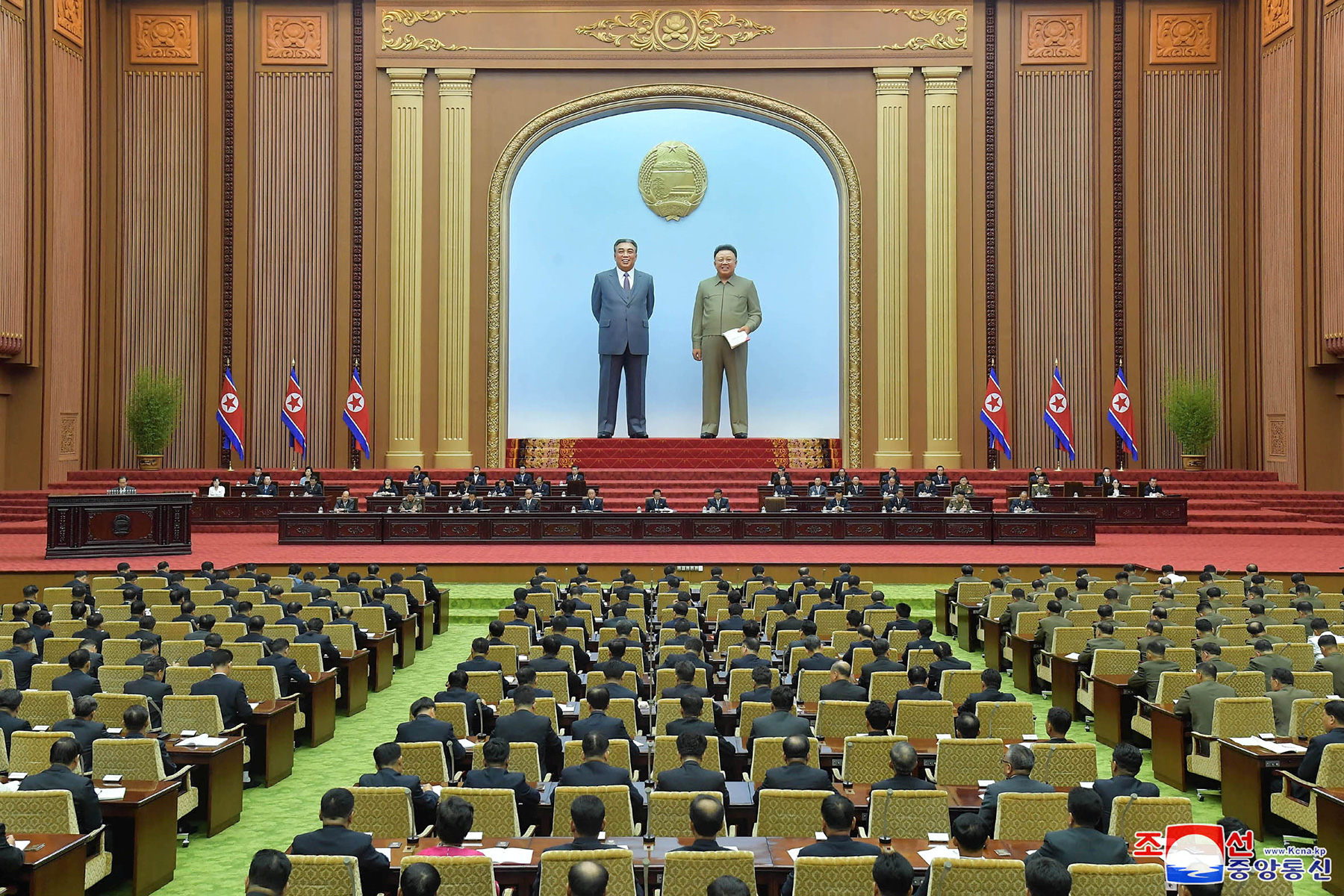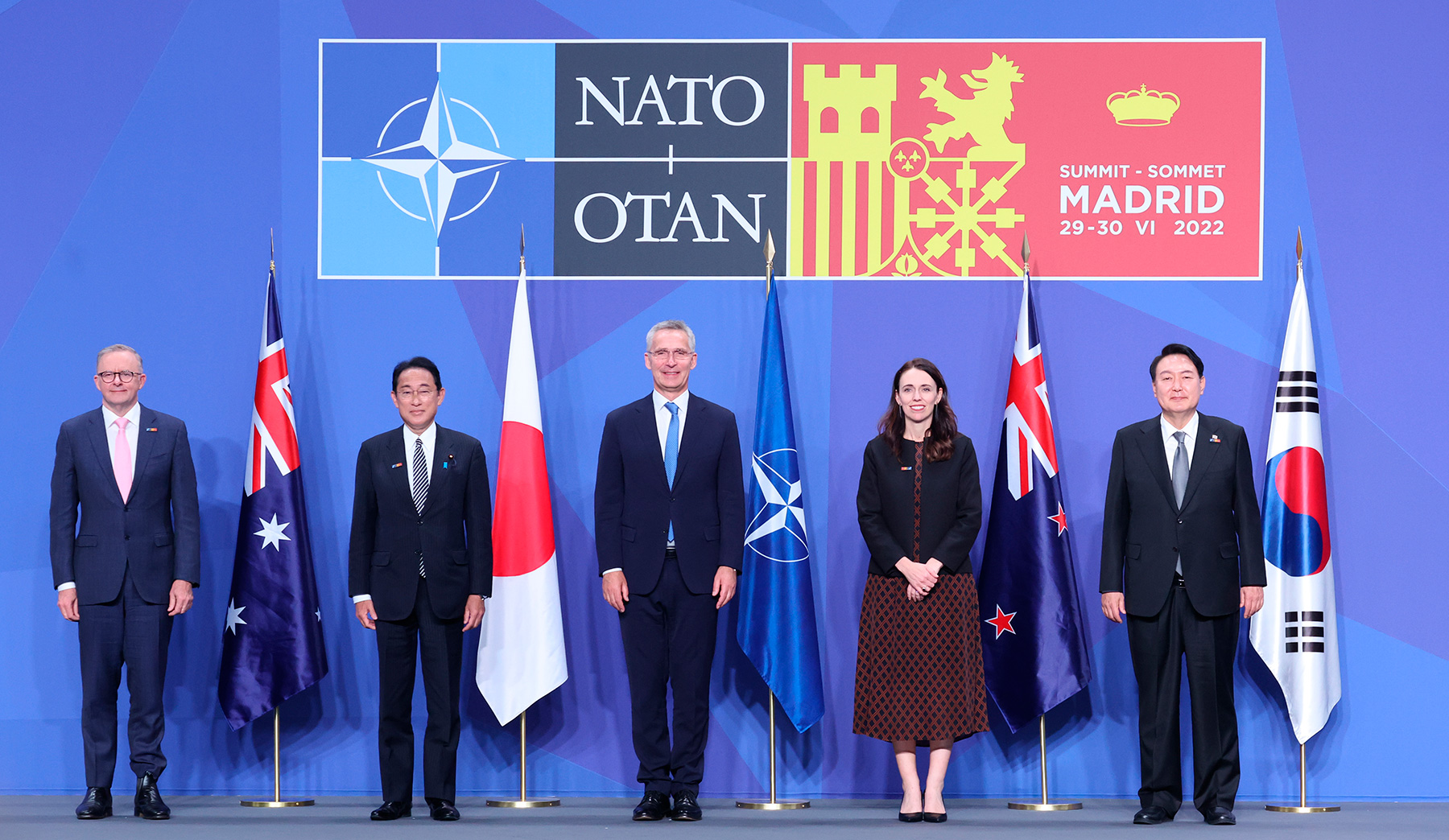Is a nuclear arms race on the Korean Peninsula inevitable? Will the idea of denuclearizing the peninsula have to be finally shelved? And should a nuclear war in Northeast Asia be regarded as a possibility, like North Korean leaders claim today?
Indeed, the geopolitical and military-strategic situation in the region looks more than redoubtable, while getting ever more complicated. Nevertheless, it should by no means be considered hopeless. With political will, persistence and diplomatic flexibility, the negative processes in Northeast Asia can still be reversed.
Official recognition of the DPRK’s nuclear status by the great powers would be a major blow to the nuclear non-proliferation regime, no less severe than the appearance of a nuclear Iran on the map of Eurasia. It is also clear that any new bilateral talks with Washington or Seoul will not change Pyongyang’s position, for all the importance North Korea attaches to direct dialogue with the United States or, to a lesser extent, with its southern neighbors. The three U.S.-North Korean summits held in 2018-2019 with Donald Trump apparently failed to convince North Korea’s leadership that the United States does not seek a regime change in the DPRK.
Two conclusions can be drawn. First, attempts at bilateral negotiations with the DPRK, even if conducted at the highest level, will not be very effective unless supported by a parallel multilateral track. Second, no negotiations in the current geopolitical and military-strategic situation in Northeast Asia will lead to the prompt denuclearization of the Korean Peninsula. Even if such a possibility existed at the turn of the century, this chance has been irretrievably lost today.
The set of tools available to the P5 for putting more pressure on the DPRK is more limited today than at any time since the turn of the century. The global and regional confrontation between the great powers and their inability to agree on the most important issues of world politics further narrows this set.
In Northeast Asia, the most urgent task is the gradual establishment of effective nuclear and ballistic weapons control mechanisms, ideally not only North Korean weapons, to reduce the risks of nuclear conflict and prevent an unbridled nuclear arms race.
If joint efforts succeeded in preventing the spiral of nuclear (and conventional) arms race in the extremely complex region of Northeast Asia, very important to the entire world, this invaluable experience of new multilateralism could have been used in other regions, no less complex and no less important for the planet—for example, in the Middle East. Then, perhaps, the global nuclear non-proliferation regime, hopelessly lagging behind the current geopolitical dynamics, would get the second wind it badly needs today.
Today, only a lazy person in the expert community has not yet commented on the numerous negative trends in international affairs, caused by the unraveling of the old system of global and regional security, which is taking place before our eyes. Some of these trends have already manifested themselves with all certainty, while others are only looming as a dark storm on the horizon, which does not make them less ominous, though. The second category of time-delayed consequences of the currently unfolding international events includes the growing threat of nuclear proliferation.
There is nothing unexpected in this escalation: a minimum level of mutual trust and predictability among great powers, primarily among the five permanent members of the UN Security Council, has always been a prerequisite for successful counterproliferation. Only by acting in unity can the great powers put up a firm barrier to potential non-proliferation violators. Through persistent joint effort over several decades, nuclear proliferation has been significantly slowed down, if not completely ground to a halt. Today, little of that trust and understanding remains. Even when the fundamental interests of the world’s major players clearly overlap, they often find it impossible to agree on any joint action.
For example, to work out a final solution to the Iranian nuclear issue, it is vital to maintain unity on the multilateral Joint Comprehensive Plan of Action (JCPOA) signed with the Islamic Republic by the P5+1 in July 2015. Even then, achieving unity was a daunting challenge. During the eight years since the nuclear deal, the world has dramatically changed—unfortunately, not for the better. Many in the West now argue that, as Iran becomes an increasingly important partner for Russia and also for China under the current geopolitical circumstances, both Moscow and Beijing may at some point look more favorably at the prospect of Tehran acquiring nuclear weapons and advanced means of their delivery.
Still, Russia and China are not unreasonably dissatisfied with the inconsistency demonstrated by the United States in its attitude toward the JCPOA. This inconsistency, as well as direct threats against the political regime in Iran, alongside terrorist attacks on its representatives, is objectively pushing Tehran toward new steps in the direction of nuclear proliferation. And such steps by Iran will almost certainly set off a chain reaction in the Middle East – first in Saudi Arabia, then in Turkey and, perhaps, even in Egypt.
The same destructive dynamic is evident in attempts to keep the great powers united in their views on the Korean Peninsula’s nuclear issues. North Korean leader Kim Jong-un’s recent visit to the Russian Far East and his private talks with Vladimir Putin have provoked an active discussion in the West about possible or already ongoing changes in Russia’s approaches to containing Pyongyang’s nuclear and ballistic ambitions. These changes, it is suggested, could eventually lead to Moscow recognizing some form of North Korea’s nuclear status.
At the very minimum, Russia could block all new UN Security Council’s sanctions that the West is likely to propose in response to the DPRK’s projected nuclear or missile tests. At most, Moscow, according to Western experts, could actively promote Pyongyang’s nuclear and ballistic efforts to open a “second front” against the U.S. in the North Pacific. A change in Russia’s stance, in turn, could affect China, which, like its northern neighbor, is under increasing military and political pressure from the United States and the globalizing NATO alliance as a whole.
Meanwhile, threats to non-proliferation in the Asia-Pacific also come from other directions, which are understandably less readily discussed in the West. It is not unreasonable to believe that Australia’s purchase of nuclear submarines from the U.S. and the UK will somehow undermine existing nuclear non-proliferation guarantees, especially if other allies and partners of Washington and London in the region line up to receive nuclear submarines after Canberra. South Korean President Yun Seok-yol, for one, has publicly expressed strong support for the possibility of his country acquiring nuclear weapons of its own. Certainly, we can regard his posture as “nuclear populism,” but the very rhetoric currently coming out of Seoul will certainly make leaders of various nations in the Asia-Pacific think twice.
In the meantime, the outcome of the 10th Review Conference of the Treaty on the Non-Proliferation of Nuclear Weapons (NPT) was unsatisfactory, to put it mildly. Four weeks of discussions in New York, back in August 2022, failed to produce consensus among the participants. The non-nuclear-weapon States have good reason to complain about the reluctance of the nuclear-weapon States to implement the provisions of Article VI of the NPT, which calls for negotiations in good faith on effective measures leading to cessation of the nuclear arms race and nuclear disarmament. The New START, which remains the last bilateral strategic arms control agreement between the United States and Russia, is currently in limbo. Continuation of U.S.-Russian strategic arms control negotiations beyond the New START looks highly unlikely at this juncture. Moreover, all nuclear powers–from the United Kingdom to China–continue to vigorously modernize and build up their nuclear arsenals.
The future of the Comprehensive Nuclear-Test-Ban Treaty (CTBT), adopted by the UN General Assembly more than a quarter century ago, looks dim. The CTBT has not even entered into force due to the reluctance of some important nations, including the United States, to ratify it. Not so long ago, Moscow allowed the possibility of a “mirror response” to the U.S. position, i.e., the possibility of Russia withdrawing from the CTBT or suspending its participation in the Treaty. There are clear and growing risks that some, if not all, nuclear powers will eventually start nuclear tests in the near future. Is it any wonder that Kim Jong-un does not consider himself politically or morally bound to move toward denuclearization of the Korean Peninsula, but rather intends to use all of the above trends to justify his country’s transformation from a de facto into a de jure nuclear power?
So, is a nuclear arms race on the Korean Peninsula inevitable? Will the idea of denuclearizing the peninsula have to be finally shelved? And should a nuclear war in Northeast Asia be regarded as a possibility, like North Korean leaders claim today?
Indeed, the geopolitical and military-strategic situation in the region looks more than redoubtable, while getting ever more complicated. Nevertheless, it should by no means be considered hopeless. With political will, persistence and diplomatic flexibility, the negative processes in Northeast Asia can still be reversed.
Official recognition of the DPRK’s nuclear status by the great powers, similar to that of India and Pakistan, would be a major blow to the nuclear non-proliferation regime, no less severe than the appearance of a nuclear Iran on the map of Eurasia. Recognizing North Korea’s de facto nuclear status similar to Israel’s status (in the spirit of Golda Meir’s famous statement: “First of all, we don’t have nuclear weapons, and second, if necessary, we will use them”) might have suited Kim Jong-il fifteen to twenty years ago, but this will clearly no longer suit his son Kim Jong-un. Too much effort and money has been invested in nuclear missile capabilities, and these have too much symbolic and practical significance for Pyongyang today. We should remind that further amendments to the DPRK Constitution, promulgated in late September 2023, enshrined the country’s strategy aimed at intensifying the development of nuclear weapons to ensure “survival rights” and “war deterrence” amid North Korea’s escalating confrontation with the United States and its allies in Northeast Asia.
It is also clear that any new bilateral talks with Washington or Seoul will not change Pyongyang’s position, for all the importance North Korea attaches to direct dialogue with the United States or, to a lesser extent, with its southern neighbors. The three U.S.-North Korean summits held in 2018-2019 with Donald Trump apparently failed to convince North Korea’s leadership that the United States does not seek a regime change in the DPRK. Following the three rounds of talks, the North Korean position has evolved toward more rigidity rather than flexibility. And after the November 2020 election victory of Joe Biden, who proclaimed the clash between liberal democracies and illiberal autocracies as the main contradiction of our era, Pyongyang has even less reason to count on the goodwill of the White House.
The political shifts of the past few years in South Korea are heading in the same direction. While the twelfth president of the Republic of Korea, Moon Jae-in (2017–2022), promoted the inter-Korean dialogue in all possible dimensions, consistently and purposefully, his successor, Yoon Seok-yeol, significantly toughened Seoul’s approach to such dialogue, effectively ending the thaw in inter-Korean relations. For sure, South Korea would claim that it was the North that closed the window of opportunity on the bilateral track with its provocative actions, and these accusations will perhaps be not completely unfounded. But in this case, it is more important how the end of the thaw is perceived in Pyongyang than how it is interpreted by Seoul.
All of the above leads to two conclusions. First, attempts at bilateral negotiations with the DPRK, even if conducted at the highest level, will not be very effective unless supported by a parallel multilateral track. Second, no negotiations in the current geopolitical and military-strategic situation in Northeast Asia will lead to the prompt denuclearization of the Korean Peninsula. Even if such a possibility existed at the turn of the century, this chance has been irretrievably lost today.
Recognizing these two rather obvious circumstances, as we see it, implies changes both in the format of future negotiations with Pyongyang and in the priorities of these negotiations—regardless of when and how exactly these negotiations are to be resumed. Sooner or later, it will be necessary to return to some version of the six-party mechanism that was more than successfully tested in 2003-2009. It is understood that the starting conditions for any multilateral format on the Korean Peninsula and Northeast Asia as a whole look much more difficult in 2023 than in 2003. The global geopolitical confrontation between the great powers is gaining momentum, and this confrontation inevitably casts a dark shadow on any attempts to resume multilateral diplomacy to resolve acute regional problems, whether in the Middle East or on the Korean Peninsula.
As for priorities, the immediate task of the new six-party or any other multilateral format of future negotiations could be the early nuclear and ballistic disarmament of the DPRK. Setting such a goal in the current environment would cause a downright rejection on the part of Pyongyang, which positions itself as a “responsible possessor of nuclear weapons” whose mission is deter potential aggressors and strengthen regional and global strategic stability. Pyongyang, feeling its power and the disunity of its dialogue partners, simply won’t agree to such a negotiating agenda, and the talks will end before they begin.
The set of tools available to the P5 for putting more pressure on the DPRK is more limited today than at any time since the turn of the century. The global and regional confrontation between the great powers and their inability to agree on the most important issues of world politics further narrows this set. There will be no return of the DPRK to the NPT in the foreseeable future, much less the country’s accession to the CTBT.
Any new negotiation process with Pyongyang must, by necessity, proceed first and foremost from the immediate interests, concerns, and priorities of North Korea itself. Apparently, Pyongyang’s priorities are security guarantees for the DPRK and the lifting of at least part of the international sanctions related to North Korea’s missile and nuclear programs. In return, Pyongyang’s behavior could be expected to be more in line with that of a “responsible nuclear weapons possessor” Pyongyang would like to position itself as.
In Northeast Asia, the most urgent task is the gradual establishment of effective nuclear and ballistic weapons control mechanisms, ideally not only North Korean weapons, to reduce the risks of nuclear conflict and prevent an unbridled nuclear arms race. For instance, the deployment of U.S. missile defense systems in the region, although explained in Washington as solely caused by a strategic challenge from the DPRK, is of concern not only in Pyongyang, but also in Beijing and Moscow.
The implementation of U.S. plans may provoke China’s and Russia’s retaliation through built-up offensive strategic weapons to maintain the credibility of their nuclear deterrence postures. Here, the interests of China and Russia are objectively closer to those of the DPRK than to the interests of Japan or South Korea. Thus, the possible new six-party talks cannot be conducted proceeding from the old “5+1” formula, when five powers jointly confront the sixth—instead, the discussion should be reshaped into a full-fledged multilateral negotiation process. Any reshaping promises to be difficult and painful for all participants in the process, but this redressing can ultimately foster a common strategic culture among the nations of Northeast Asia, whose absence remains among the main obstacles to the formation of a regional security system.
The denuclearization of the Korean peninsula is still very important, but preserving peace in Northeast Asia is even more important for today and for tomorrow. Only if all countries in the region feel that the threat of a major military conflict has passed can Northeast Asia avoid a new round of arms race and gradually return to a prospect of complete elimination of nuclear weapons on the Korean Peninsula. In other words, we need to treat the causes of regional instability rather than its symptoms. Priorities should include an appropriate set of military confidence-building measures, as well as crisis management and stability-building mechanisms. One could start with relatively simple, politically non-toxic, technical things—such as military-to-military contacts or information sharing—and gradually move to more complex, politically sensitive and far-reaching forms of multilateral engagement.
Let us stress once again: acquiescence to discuss North Korean priorities does not remove the issue of complete denuclearization of the Korean Peninsula from the agenda and does not entail an automatic recognition of the DPRK’s de jure nuclear status. Such recognition would be a serious blow to the entire nuclear non-proliferation regime, which is already in bad shape. Yet, the issue of the North Korean nuclear dossier, which is crucial for regional security, should be considered in the context of broader and more alarming processes that unfold not only on the Korean Peninsula but around it as well. It was not very productive to consider the “Korean issue” in isolation from these processes before, but it has become virtually impossible under the current circumstances.
If joint efforts succeeded in preventing the spiral of nuclear (and conventional) arms race in the extremely complex region of Northeast Asia, very important to the entire world, this invaluable experience of new multilateralism could have been used in other regions, no less complex and no less important for the planet—for example, in the Middle East. Then, perhaps, the global nuclear non-proliferation regime, hopelessly lagging behind the current geopolitical dynamics, would get the second wind it badly needs today.
The short version of the article first published in the South China Morning Post.







